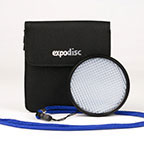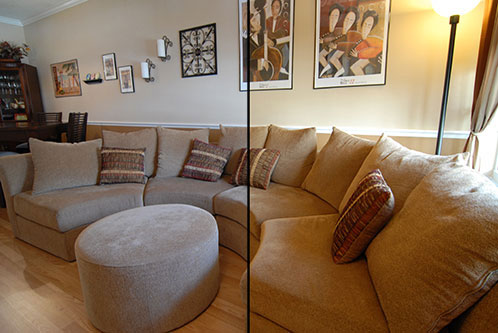Accurate white balance is an important part of digital photography. Getting a correct white balance can save you from spending an unnecessary amount of time on color correcting. Even though the auto and preset white balance functions in today’s cameras are very sophisticated, they sometimes produce inconsistent results. This is especially true when shooting in mixed lighting conditions. That’s where the ExpoDisc can save you a considerable amount of time.

Custom white balance is usually performed by having your subject hold a white or gray card, filling the frame with the card, and taking a reference photo so your camera can determine a neutral white point. The problem with using a gray or white card is you have to be sure it is evenly lit with no reflections or shadows to get an accurate reading. Also, only the most expensive white/gray cards are actually calibrated to be color neutral. The biggest problem is the fact that you may not be able to have your subject hold this reference card.
The ExpoDisc simplifies the entire custom white balance process. The way it works is it turns your camera’s reflective white balance capability into an incident white balance tool. Instead of having your subject hold a white or gray card for reference, you simply attach the ExpoDisc to your lens, point it in the direction of where you are going to take a picture, and perform a custom white balance like you normally would. If you are using a RAW workflow, you can also take a reference shot with the ExpoDisc and perform a batch custom white balance once you import the photos into your editing program of choice. Either way, it saves you a considerable amount of time removing unwanted color casts.
Where the ExpoDisc really shines is shooting in mixed lighting conditions. Here is an example of a room that has a mixture of sunlight and tungsten light. You can see that the auto white balance produces a slight blue cast to the image while the ExpoDisc is more representative of real life.


Auto White Balance vs ExpoDisc Custom White Balance
The ExpoDisc is available in standard filter sizes ranging from 52mm to 82mm. My recommendation would be to buy the ExpoDisc that corresponds to the largest size lens you have or plan to get. There is also a Portrait ExpoDisc available that adds a warming effect to the image. This might be a better alternative if your primary focus is people, weddings, or portraits. Personally I chose the neutral ExpoDisc because I like to add any warming post process so I have better control over the degree of how warm the picture is.
You can find more information at ExpoDisc.com.
